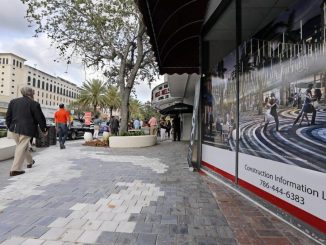From Sept 17th, 2010 through Feb 20th, 2011.
 The construction of the Eiffel Tower in less than two years. Olympic sprinters. Traffic. Worker productivity. Kitchen efficiency. Urban sprawl. Clocks and more clocks. NoDoz. FedEx. These events, images, objects, products, and ideas have a common denominator – all are expressions of the idea of speed and its centrality to modern society. The exhibition Speed Limits explores the role of speed in modern life and commemorates the hundredth anniversary of Italian Futurism.
The construction of the Eiffel Tower in less than two years. Olympic sprinters. Traffic. Worker productivity. Kitchen efficiency. Urban sprawl. Clocks and more clocks. NoDoz. FedEx. These events, images, objects, products, and ideas have a common denominator – all are expressions of the idea of speed and its centrality to modern society. The exhibition Speed Limits explores the role of speed in modern life and commemorates the hundredth anniversary of Italian Futurism.
The exhibition is jointly organized by The Wolfsonian and the Canadian Centre for Architecture (CCA) and curated by Jeffrey T. Schnapp, the Rosina Pierotti chair and professor of French and Italian and comparative literature and, by courtesy, of German studies at Stanford University and director of the Stanford Humanities Lab. In Speed Limits, Schnapp examines what he calls the “modern era’s cult of speed.”
The 1909 Manifesto of Futurism proclaimed, “The world’s magnificence has been enriched by a new beauty: the beauty of speed.” The Futurists identified speed as “a fundamental aspect of modernity, but they didn’t know what would follow – no one could have foreseen the centrality of speed in our lives a hundred years later and its many expressions in the digital age,” explains Marianne Almanac, The Wolfsonian’s associate director for curatorial affairs and education.
Speed Limits explores this futurist theme, its trajectory, and its contemporary legacies, including limitations such as traffic accidents, stressful lifestyles, fast food, and environmental devastation. As Schnapp writes, “The legacies in question are multiple because speed means multiple things with respect to modern life.”
Speed Limits includes more than two hundred objects from the two institutions, and was on view at the CCA from May 20 through November 8, 2009. The idea for the exhibition grew out of an exploration of The Wolfsonian’s collection by Schnapp while he was a research consultant for the reinstallation of the permanent exhibition galleries. “In reviewing the collection, Jeffrey identified the concept of speed as an idea that ran through the collection,” says Lamonaca.
The exhibition, which is critical rather than commemorative in spirit, features a variety of media including posters, books, drawings, pamphlets, video installations, and objects. Located on the museum’s sixth and seventh floors, it is designed by Rene Gonzalez, principal at Rene Gonzalez Architect, in collaboration with Wolfsonian exhibition designer Richard Miltner, and it is organized in five key areas: circulation and transit; construction and the built environment; efficiency; the measurement and representation of rapid motion; and the mind/body relationship.
The accompanying exhibition catalog, also titled Speed Limits, is co-published by The Wolfsonian, the CCA, and Skira Editore, Milan and is available in The Dynamo Museum Shop. The catalog includes essays by leading international scholars, including Schnapp, and “Speed Readings,” an anthology of previously published works from the nineteenth century to the present regarding the cult of speed.
Wolfsonian Museum-FIU
1001 Washington Avenue
Miami Beach, FL 33139
305.531.1001
www.wolfsonian.org







Be the first to comment